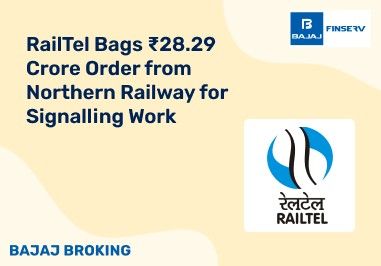BAJAJ BROKING
PDP Shipping & Projects IPO is Open!
Open a Free Demat Account
Trade Now, Pay Later with up to 4x
Track Market Movers Instantly
What is Leverage in Stock Market?
Introduction
Leverage is a powerful technique that allows traders to increase their exposure and potential returns in the stock market. It involves borrowing money from a stockbroker to trade more securities than one can afford with their own capital. Leverage can magnify both profits and losses, so it requires careful risk management and caution. This article explains what is leverage in stock market, how it works, in which markets it is available, and what are its benefits.
Explaining Leverage Meaning in Stock Market
Leverage in trading is based on the concept of derivatives, which are financial instruments that derive their value from an underlying asset. Derivatives allow traders to speculate on the price movements of the asset without actually owning it. For example, a trader can buy a call option on a stock, which gives them the right to buy the stock at a predetermined price within a specified period. The trader does not need to pay the full price of the stock, but only a fraction of it, called the premium. The premium is the cost of the option and represents the maximum loss for the trader.
However, if the stock price rises above the strike price (the predetermined price), the trader can exercise the option and buy the stock at a lower price than the market price. The difference between the market price and the strike price is the profit for the trader. The profit is multiplied by the number of options that the trader bought, which can be much higher than the number of stocks that they could afford with their own capital. This is how leverage works: it allows traders to control more securities with less money.
To trade with leverage, traders need to open an account with a registered stockbroker who can lend them money for trading. The amount of money that the stockbroker can lend depends on various factors, such as the type of security, the volatility of the market, and the creditworthiness of the trader. The stockbroker charges interest on the borrowed money and also requires the trader to deposit a certain percentage of the value of the trade as a margin. The margin is a collateral that protects the stockbroker from losses in case the trade goes against the trader’s expectation.
Also Read: The Pros and Cons of Margin Trading
Leverage in Stock Market Example
For example, suppose a trader wants to buy 1,000 shares of a company whose current price is ₹1,000 per share. The total value of the trade is ₹10 lakh, but the trader only has ₹2 lakh in their account. So, they take ₹8 lakh as leverage from their stockbroker and deposit ₹2 lakh as margin. The margin percentage is 20% of the value of the trade. By doing so, they pay ₹2 lakh from their own pocket but are able to trade 1,000 shares worth ₹10 lakh (5x leverage).
If their trade goes as expected and the stock price rises by 10% (New price = ₹1,100), their total profit will be ₹100 x 1,000 = ₹1 lakh (minus interest and fees). Without leverage, their total profit would have been only ₹100 x 200 = ₹20,000 (minus fees). Hence, through leverage, they not only gained 5x exposure but also made 5x profit.
Markets in Which Leverage Can Be Used
Leverage in stock market is not limited to the stock market. It is also available in other markets where derivatives are traded, such as:
- Indices: An index is a measure of the performance of a group of securities belonging to a sector, market cap, etc. For example, Nifty 50 is an index that tracks 50 large-cap companies listed on NSE. Indices are not physical assets, so they are traded using financial instruments that mimic their price movement (like ETFs or futures).
- Foreign Exchange (Forex): Forex is the market where various currencies are exchanged for one another. Forex traders can take advantage of the fluctuations in exchange rates and make profits by buying low and selling high. Forex is also the world’s largest market by trading activity and liquidity.
- Cryptocurrencies: Cryptocurrencies are digital currencies that operate on decentralised networks using cryptography. Cryptocurrencies have no central authority or intermediary and are governed by supply and demand. Cryptocurrencies dabble in the unregulated space but function in a similar manner as forex. They can also be traded over various exchanges for arbitrage opportunities. Since some of the biggest cryptocurrencies like Bitcoin and Ethereum are very expensive, leverage trading comes in handy.
Benefits of Leverage in Stock Market
Leverage trading has many benefits for traders who want to increase their exposure and potential returns in various markets. Some of these benefits are:
- Leverage helps traders gain exposure up to 4-5x (or more) of what they can afford to pay for. This arrangement makes it less financially burdensome for them to trade in larger quantities or more expensive securities.
- Leverage also helps traders maximise their potential profit stemming from higher exposure to the underlying security. Even if the underlying asset’s price moves minimally, they can still make big gains due to leverage.
- Since leverage is available in various markets, traders have more options and opportunities to diversify their portfolio and trade in different assets. Moreover, they have complete freedom to deploy the leveraged amount in a way they deem fit, as long as they meet the margin requirements and interest payments.
- With leverage, traders can not only gain greater exposure to an asset, but they can also trade in dearer assets that are otherwise out of reach. Premium pricing on some securities makes them impossible to trade in with small capital. Leverage allows traders to access these securities and benefit from their price movements.
Conclusion
Leverage in the stock market is a technique that allows traders to use borrowed funds to increase their exposure and potential returns from trading securities. Leverage can magnify both profits and losses, depending on the direction of the market movements. Leverage can be used in various ways, such as margin trading, leveraged ETFs, and trading derivatives. Leverage can be beneficial for traders who have a clear strategy and risk management plan, but it can also be risky for inexperienced or overconfident traders who may not understand the underlying risks. Leverage should be used with caution and only after thorough research and analysis.
Share this article:
Read More Blogs
Our Secure Trading Platforms
Level up your stock market experience: Download the Bajaj Broking App for effortless investing and trading













